
Today, the U.S. Commerce Department said the economy grew at a slightly faster pace in the final three months of last year. It expanded at a 3.0 percent annual rate from October to December, the fastest pace since the spring of 2010. The data was slightly ahead of estimates and a full 1.2 percent better that the numbers from the third quarter of 2011. Manufacturing activity in the U.S. Midwest, a widely-watched index, also beat expectations.
In response, gold bullion is down $60.95 to $1,727.45 an ounce as many felt the bullish data out of the United States reduces the risk of inflation. Silver is also down sharply to $35.25 giving up $1.95 so far on the day. Some feel that with the positive news the U.S. Federal Reserve may not embark upon another round of quantitative easing. The general feeling, before today, was the Fed might ultimately be forced to implement QE3 and print more money to buy-up government bonds.
Federal Reserve chairman, Ben Bernanke, focused on “positive developments” in the labor market during the first day of his semi-annual monetary policy report to Congress. He gave no signal that the central bank is considering additional measures to spur the economy using monetary policy.
“I think the fact that they’re not going to have to come in with QE3 means there is good economic growth in the U.S. (and) means they’re not going to ram money into the process, which is inflationary and good for gold,” said Chris King, portfolio manager at Morgan, Meighen and Associates.
Lawrence Creatura took a more cautious approach to Bernanke’s address. Mr. Creatura, a New York fund manager at Federated Investors Inc., notes, “The economy is gradually putting one foot in front of the other. The one question that’s coming up is the impact of higher oil prices. If energy prices remain where they are or increase, that will have a negative impact on future economic data.”
Gold and silver equities are taking it on the chin today. Junior gold exploration and development company NovaGold Resources (Stock Profile – TSX:NG & AMEX:NG) is currently down 5.5%. The company’s flag-ship project, Donlin Gold, is expected to produce 750,000 ounces of gold annually for the company, with cash costs estimated at US$409 per ounce. Donlin Gold contains 39 million ounces (Measured & Indicated) at an average grade of 2.1 grams per tonne. The Donlin Gold project is under joint ownership with Barrick Gold (Stock Profile – TSX:ABX & NYSE:ABX).
Scorpio Gold (Stock Profile – TSXV:SGN), another junior gold exploration and development company, is also leading the decliners today. The company is advancing the Mineral Ridge Gold operation in Esmeralda County, Nevada with aims of joining the ranks of junior gold producers. Shares of Scorpio Gold are currently down 3.8 percent today trading at $1.00 per share.
Shares of junior gold miner Nevsun Resources (Stock Profile – TSX:NSU & AMEX:NSU) are also down sharply today slipping below the $4.00 mark. Earlier this month, the company announced lower than expected production guidance for its Bisha mine in Eritrea. The announcement sent shares tumbling from $6.30 to $4.40 and resulted in some, including TD Securities analyst Steven Green, to question Nevsun’s resource model from March, 2011.
Silver miners are also leading the daily decliners this morning. Endeavour Silver (Stock Profile – TSX:EDR & NYSE:EXK), Orko Silver (Stock Profile – TSXV:OK), and US Silver (Stock Profile – TSX:USA & OTCQX:USSID) are down 5.8 percent, 5.8 percent and 5.6 percent respectively on the heels of Bernanke’s report.
NEWS RELEASE.
Feb. 29, 2012: Vancouver, BC – Strike Graphite Corp. (Stock Profile – TSXV: SRK) announced that Geotech Ltd. has completed the helicopter-borne VTEM – electromagnetic survey of its Deep Bay East Graphite property located within north eastern Saskatchewan.
Preliminary data from the VTEM survey has highlighted a strong conductive horizon associated with the known graphite mineralization at Deep Bay East, and extending well beyond the known limits of the historic mineralization. Based upon the preliminary survey data, the historic conductor was confirmed at approximately 2.5 km strike length. A second conductor, approximately 2 km in length, was identified.
To view the VTEM survey diagram – CLICK HERE.
CompanyFeed™
Feb. 29, 2012: Littleton, Colorado – Ur-Energy Inc.’s (Stock Profile – TSX:URE & AMEX:URG) wholly owned subsidiary NFU Wyoming LLC has completed an asset exchange agreement with Uranium One Americas Inc. which provides for the transfer to Ur-Energy of specific federal unpatented mining claims and state of Wyoming mineral leases located adjacent to Ur-Energy’s Lost Creek property. In accordance with the terms of the agreement, the specified property interests, associated mineral rights and related data are to be exchanged for the company’s Southwest Powder River basin drill hole database package.
Ur-Energy president and chief executive officer Wayne Heili stated: “This agreement to exchange Wyoming assets between Ur-Energy and Uranium One represents a true win-win arrangement. The acquired property interests fit well with Ur-Energy’s corporate strategy of expanding the resource base available for processing at the Lost Creek facility while the database will be useful to Uranium One with respect to its Allemand-Ross project in Wyoming’s Powder River basin.”
CLICK HERE – for more information.
CompanyFeed™
NEWS RELEASE.
Feb. 28, 2012: Vancouver, BC – Oracle Mining Corp. (Stock Profile – TSX:OMN & OTCQX:OMCCF) announced the completion of a non-brokered private placement of 7,800,000 common shares to RichStone Mining Investment (Hong Kong) Limited for aggregate gross proceeds of $9,750,000.
As a result of the private placement, RichStone now owns approximately 19.9% of Oracle Mining’s issued and outstanding common shares. RichStone is a wholly-owned subsidiary of RichStone Investment Co., Ltd., a company focused on investment in the exploration and development of base metals, oil and coal. Established in 1997, RichStone has 11 subsidiaries, plus area and administrative offices and research centres throughout China, employing nearly 1,000 people.
To read more about the financing – CLICK HERE.
CompanyFeed™
NEWS RELEASE.
Feb. 24, 2012: Littleton, Colorado – Ur-Energy Inc. (Stock Profile – TSX:URE & AMEX:URG) announced the closing of a brokered private placement financing whereby the Company sold 17,250,000 common shares at a price of C$1.00 per share for total gross proceeds of C$17,250,000. Dundee Securities Ltd. and ROTH Capital Partners, LLC, acted as agents for the offering. The offering included the exercise of an over-allotment option by the agents for 2,250,000 shares.
The net proceeds are expected to be used for construction of Ur-Energy’s Lost Creek uranium project in Wyoming, for possible acquisitions and for general corporate purposes.
To read more – CLICK HERE.
CompanyFeed™
NEWS RELEASE.
February 23, 2012: Vancouver, BC – Strike Graphite Corp. (Stock Profile – TSXV: SRK) announced today that Geotech Ltd. has completed the previously announced helicopter-borne VTEM – Electromagnetic Survey of its Simon Lake Graphite property located within north eastern Saskatchewan.
Preliminary data from the VTEM survey has highlighted a strong conductive horizon associated with the known graphite mineralization at Simon Lake, and extending well beyond the known limits of the historic mineralization. Based upon the preliminary survey data, the conductive area is estimated to exceed 25 km in overall strike length.
To read more – CLICK HERE.
CompanyFeed™
NEWS RELEASE.
Feb. 22, 2012: Johannesburg, South Africa – Witwatersrand Consolidated Gold Ltd. (Wits Gold – Stock Profile – TSX:WGR) announced the Department of Mineral Resources (DMR) has accepted the Company’s application for a Mining Right for gold, silver and uranium over its combined Prospecting Rights in the southern Free State goldfield. The total area measures 14,965 hectares (149.65km²) and includes the De Bron-Merriespruit (DBM), Bloemhoek, Robijn and Hakkies Project areas. The granting of the Mining Right is expected over the next 12 months once the Company complies with requirements in terms of the Minerals Act, such as obligations in terms of feasibility studies, environmental compliance as well as Social and Labour Plan commitments.
The Company’s DBM Project area, where mining will start at 480 metres below surface, will be the focal point for the first phase of mining activity. A pre-feasibility study is currently being fast-tracked at the DBM Project for completion by May 2012, which will also provide a more detailed timeline for the new mine’s development.
On 10 January 2012 Wits Gold reported a revised Indicated gold and uranium Mineral Resource of 7.5 Moz (41.8 Mt at 5.5 g/t Au) and 8.2 Mlbs U3O8 (21.7 Mt at 0.17 kg/t U3O8) at the DBM Project, the bulk of which is situated at depths of between 480 and 1 000 metres below surface. This Mineral Resource includes a high-grade zone containing 3.6 Moz gold at an average grade of 8.1 g/t.
To read more – CLICK HERE.
CompanyFeed™
The World Gold Council (WGC) reaffirmed the power of the Love Trade in its 2011 Gold Demand Trends report released this week. Gold demand grew 0.4 percent in 2011 despite a 28 percent year-over-year increase in bullion’s average price.
After flirting with the top spot for some time, China emerged as the world’s largest gold market for jewelry and investment during the fourth quarter of 2011 as demand in India weakened. This is the first time China’s demand outpaced India’s in 11 quarters. However, India did retain the gold demand crown for the entire year, purchasing 933 tons compared to China’s demand of 770 tons.
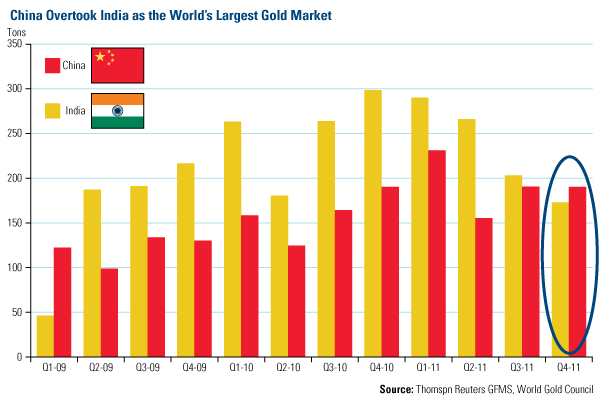
I always say the trend is your friend, and I believe China’s increasing demand for gold is one trend that is just getting started. Although gold imports from Hong Kong were cut in half in December, HSBC Global Research reports that overall gold imports from Hong Kong were 10 times the historical average from January through November 2011. HSBC expects a continued rise in Chinese incomes will keep demand at a robust pace. The WGC sees domestic demand for gold jewelry and investment driving 20 percent growth in Chinese gold demand during 2012.
China should consider its leadership as the No. 1 gold market a short-term position, though. While China’s presence in the bullion market is strong and growing for jewelry and investment, India’s ancient relationship with the yellow metal is such that “domestic drivers of demand are largely independent of outside forces,” says the WGC. The WGC does not see India’s role in the gold market diminishing over the long term.
Ajay Mitra, the WGC’s managing director for the Middle East and India, recently expressed India’s strong ties with gold in a 60 Minutes feature. Gold has always been a part of India’s history, culture and tradition. I have witnessed firsthand the strength of this bond many times over the years. As the famous saying goes, “no gold, no wedding.”
Don’t Forget About the Fear Trade
The Fear Trade was also recently reaffirmed by the Federal Reserve when it publicly stated its intention to keep inflation at “exceptionally low levels” through 2014. Inflation is the kryptonite to the Fed’s monetary efforts and it’s likely the Fed will take any measures necessary to prevent inflation spikes.
The Fed has targeted a 2 percent inflation rate, which means the U.S. dollar will lose 33 percent of its value over the next 20 years, says The Daily Reckoning’s Charles Kadlec. In the next four years alone, nearly 10 percent of the “value of Americans’ hard earned savings” will be destroyed, says Charles. Put another way, Charles estimates that it will take $150 in the year 2032 to purchase the same amount of goods you could get for $100 in 2012.
For four decades following the end of the gold standard, the purchasing power of the dollar has been plunging: A dollar worth 100 cents in 1970 is now valued at a measly 18 cents.
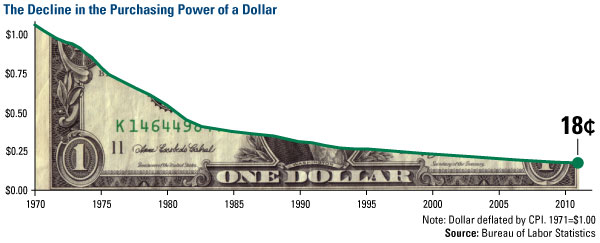
Charles isn’t the only one opposed to the Fed’s “monetary manipulation.” In his latest letter to shareholders, Warren Buffett faults the government and its “systemic forces” for destroying the purchasing power of investors. He argues stock investments offer the best long-term investment opportunity because interest rate levels don’t offset the loss of purchasing power due to inflation.
However, there is one group that benefits from the low interest rate environment—borrowers. This means the largest borrowers in the world, developed world governments, will be able to service their enormous amounts of debt more easily. This year alone, the U.S., Japan and Europe will roll over $8 trillion in federal debt.
CIBC World Markets sees the secular bull market in gold continuing for “several years,” as the firm believes debt in major economies has reached a point “where financial and economic pressures will manifest themselves in ways that have up until now only been dreamed about.” With these manifestations, Ian McAvity equates gold to insurance. He suggests to readers that they wouldn’t cancel fire insurance because their house hasn’t had a fire. “Gold proffers the best ability to protect long-term purchasing power against deliberate devaluation of the paper alternatives,” he concludes.
From the article, “The Enduring Popularity of Gold” by Frank Holmes. Frank Holmes is chief executive officer of U.S. Global Investors – a registered investment adviser that manages approximately $2.8 billion. The information provided herein has been provided to MiningFeeds.com by the author and, as such, is subject to our disclaimer: CLICK HERE.
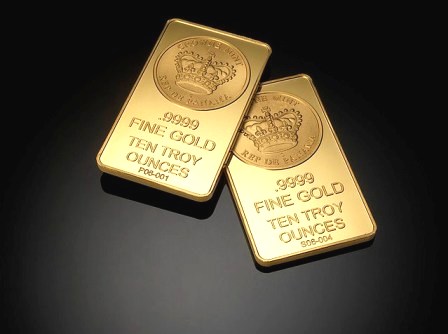
As the European debt crisis captured headlines around the world the markets, as expected, were volatile this week. And resource stocks, in particular, were under pressure. Despite the images of buildings burning in Athens, equity markets were resilient and closed the week with modest gains.
The big stories this week came from the junior gold mining sector as some big drill results hit the street and resulted in some strong gains for some junior miners.
Shares of GTA Resources & Mining Inc. (Stock Profile – TSXV:GTA) took-off on Tuesday when the company announced results from a drilling program on the Northshore property near Schreiber, Ontario. Results included 149.5 metres grading 3.21 g/t gold (uncapped) or 1.20 g/t gold (capped).
For the capped results, the company cut high-grade values to 28.79 g/t gold, representing the 99th percentile of all drill core assay values obtained from the 2011 drill program. On Friday, GTA announced a brokered private placement of $4-million in common share units and flow-through shares. The financing is being undertaken on a best-efforts basis by a syndicate of brokers.
GTA’s stock closed the week at $1.22, up 480%, while trading more than 15 million shares – more than the issued and outstanding common shares of the company. GTA has an option agreement with Balmoral Resources Ltd. (Stock Profile – TSXV:BAR & OTC:BALMF), whereby GTA Resources can earn a 70% interest in the Northshore project from Balmoral by spending $5.5-million on exploration expenditures, issuing 3.5 million shares to Balmoral and making cash payments totalling $150,000. In 2011, MiningFeeds connected with Darin Wagner, President & CEO of Balmoral Resources, for the exclusive interview – CLICK HERE.
Also on Tuesday, but somewhat overshadowed by the news from GTA Resources, shares of Volta Resources Inc. (Stock Profile – TSX:VTR) moved up sharply after the gold junior reported the discovery of new high-grade gold mineralization situated approximately 700 metres southwest of its Kiaka Central Area deposit in Burkina Faso. Burkina Faso is formerly known as the Republic of Upper Volta and is the etymology of this junior miner. Results from Volta’s announcement, including 25.0 metres of 9.22 g/t gold, were well received by the market. The company’s shares closed this week at $1.55, up 36% on nearly 10 million shares of volume.
This week also saw another micro-cap mining stock posting big gains on big volume. On Wednesday, shares of Metals Creek Resources Corp. (Stock Profile – TSXV:MEK) jumped 35% to 11.5 cents on volume of more than 12.6 million shares after the company reported final assay results from its 2011 Ogden Gold project drill program in Timmins, Ontario. Results included an intercept of 1.92 g/t gold over 94.0 meters between a depth of 78 metres and 172 metres.
The Ogden Gold project is under option from Goldcorp Inc. (Stock Profile – TSX:G & NYSE:GG). Metals Creek can earn a 50% interest in the project by incurring $3.1 million in expenditures and issuing a combination of cash and shares totaling $460,000 over four years. Shares of Metals Creek closed the week at $0.125 up 47%.

Greece’s predicament just became substantially worse. Frustrated by missed deadlines and last minute twilight dealings, Euro zone finance officials are now examining ways of delaying parts or even all of a second bailout program for Greece while still avoiding a disorderly default.
This is a dangerous game. Although Greece is not Goldman Sachs, alone, it cannot bring down the world’s entire financial system. Some are concerned the country’s default could trigger a systemic issue within Europe. Data from Athens on Tuesday showed the economy shrank, on an annualized basis, 7.0 % in the fourth quarter of 2011. A shrinking economy makes it more difficult for Greece to meet the targets imposed by the EU.
Although there are similarities with what the United States went through at the onset of the financial crisis, the issues in Europe are more complex and will take years to resolve, according to Henry Paulson, former Treasury Secretary and founder of the Paulson Institute. Paulson thinks the most important thing is protecting the banks from a big failure that could drag down the whole banking system.
The European Central Bank has made some moves to assure the “shock” of a big failure, such as a Greek default, will not cause a ripple effect across the entire system. At the end of 2011, ECB President Mario Draghi took a step in the right direction to stabilize the banks with a liquidity injection. The ECB launched a long-term refinancing operation (LTRO) in December, offering banks three-year loans at its record low 1% interest rate. Another LTRO is scheduled for Feb. 29, 2012.
Despite the ECB’s moves, rating agency Moody’s warned yesterday it may cut the triple-A ratings of France, Britain and Austria and it downgraded six other European nations including Italy, Spain and Portugal, citing growing risks from Europe’s debt crisis. Moody’s move was less aggressive than rival agency Standard & Poor’s, but its action put England’s top credit rating in jeopardy for the first time.
Moody’s stated it was worried about Europe’s ability to undertake the reforms needed to address the crisis and the amount of funds available to fight it. It also said the region’s weak economy could undermine austerity measures by European governments as they attempt to fix their finances.
On the positive side, China just announced it will “get more involved” in supporting Europe and sustain its holdings of euro assets. This announcement spurred overnight gains in Asian stocks and gold. China, which holds the world’s largest foreign-exchange reserves of $3.18 trillion, has previously indicated it wants to diversify its holdings away from U.S. dollar-denominated assets.
So what’s next? Stay tuned, like the Twilight series this saga is far from over.
NEWS RELEASE.
Feb. 14, 2012: Vancouver, BC – Strike Graphite Corp. (profile TSXV:SRK) signed an agreement to acquire a 100-per-cent interest in the Wagon Graphite Property located in southwestern Quebec.
The Wagon Property consists of three separate claim blocks totaling approximately 3,000 hectares situated within the vicinity (approx. 15 km east) of Timcal’s Lac des Iles Graphite Mine, 150 km northwest of Montreal. Lac des Iles is the largest of two Canadian graphite producers. It has been in production for over twenty years and produces graphite products of various sizes and purities.
To read more – CLICK HERE.
CompanyFeed™
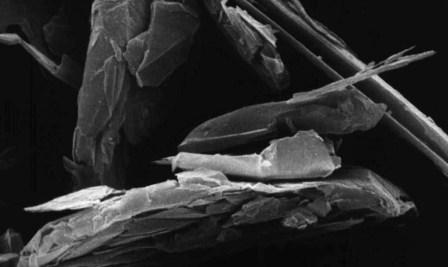
In 2010 a European Commission included graphite among the 14 materials it considered high in both economic importance and supply risk. The British Geological Survey listed graphite as one of the materials to most likely be in short supply globally. The US has also declared graphite a critical material. The U.S. Department of Homeland Security, and the State Department, said America could be hurt if terrorists were to disable graphite mines in China.
Supply and Demand
The natural graphite market is 1-1.2 million tons per year and consists of several different forms of graphite – flake, amorphous and lump. Historical applications primarily use amorphous and lump graphite, most newly emerging technologies and applications use flake graphite. Of the up to 1.2 million tons of graphite that are processed each year just 40% is flake.
China, India and Canada are responsible for most graphite mining and processing with China producing the lion’s share at 70–80%. China’s production is 70% amorphous and lower value small flake graphite.
Currently China imports a significant amount of North Korea’s large flake graphite production raising considerable doubts in regards to China’s abilities to ramp up its graphite supply. Indeed China has already taken steps to retain its graphite resources by restricting its export quota – China imposed a 20% export duty, a 17% VAT and also closed state owned enterprises.
“The days of cheap, abundant graphite from China are over.” Industrial Minerals Magazine May, 2011.
It’s thought that the increased use of lithium-ion batteries could gobble up well over 1.6 Mt of flake graphite per year by 2020 – only flake, upgraded to 99.9% purity and synthetic graphite (made from petroleum coke, a very expensive process) can be used in lithium-ion batteries.
“Annual flake graphite production will have to increase by a factor of six by 2020 to meet incremental lithium carbonate requirements for batteries.” Canaccord research report.
The U.S. Geological Survey says large-scale fuel cell applications are being developed that could consume as much graphite as all other uses combined – a bold statement, but even if only half of the USGS demand is realized graphite use is going to explode just because of fuel cells, let alone other known demand drivers and new applications.
What if the current market almost doubles – new demand, between now and 2020, comes in at one million tonnes on top of the existing 1.2 million?
Today’s graphite producers, other than the ones in China, are going to have to produce more and junior companies are going to have to get busy and start to develop deposits. There will be a premium placed on mines in stable, safe areas for investment.
Since a large scale producer puts out 20,000 to 40,000 tons per year that’s a lot of new mines and a lot of opportunity for investors – one million tonnes divided by 40,000 could be the equivalent of up to twenty five mines worth of new production needed – and that’s a severe low-balling of the experts forecast increased usage numbers.
NEWS RELEASE.
Feb. 9, 2012: Vancouver, BC – Oracle Mining Corp. (profile TSX:OMN – OTC:OMCCF) announced the results of its ongoing drilling program at the Oracle Ridge Copper Mine, located in southern Arizona. Hole ODH-19 encountered six zones of greater than 1.0% copper mineralization, including 27 feet of 3.57% copper and 1.07 oz/ton silver.
Assays for an additional zone in ODH-19 are pending.
For the complete results – CLICK HERE.
CompanyFeed™
NEWS RELEASE.
Feb. 9, 2012: Littleton, Colorado – Ur-Energy Inc. (Stock Profile – TSX:URE & AMEX:URG) has successfully negotiated its third agreement to supply uranium produced at its wholly owned Lost Creek project.
The signing of this supply agreement marks the realization of Ur-Energy’s strategic product marketing objective by which the company has committed a predetermined portion of the forecasted uranium production from Lost Creek into term sales agreements with U.S.-based nuclear utilities. This agreement calls for total deliveries of 100,000 pounds of uranium concentrate per year in a multiyear schedule. The agreement specifies firm delivery prices in the low range of $60 (U.S.) per pound over its term.
To read more – CLICK HERE.
CompanyFeed™
NEWS RELEASE.
Feb. 9, 2012: Vancouver, BC – Strike Graphite Corp. (profile TSXV:SRK) closed a private placement of 7,357,715 units at $0.175 per unit for total gross proceeds of $1,287,600. Each unit consists of one common share and one-half of one transferable share purchase warrant, each whole warrant exercisable into one common share for a period of two years at a price of $0.25 per share.
To read more – CLICK HERE.
CompanyFeed™
We are delighted to bring you the MiningFeeds bottom fishing report. And to catch these fish, you don’t need to know how to noodle.
Noodling is the term used for fishing with your bare hands. Noodling is practiced primarily in the southern United States and the primary choice of noodlers is the flathead catfish. Flathead catfish live in holes or underbrush in rivers and lakes, and thus, they are relatively easy to capture due to the static nature of their dwelling. To begin, a noodler goes underwater to depths ranging from a few feet to up to twenty feet. Once identified, the noodler places his hand inside a catfish hole. If all goes well, the catfish will swim forward and latch onto the fisherman’s hand, usually as a defensive maneuver. If the fish is particularly large, the noodler can hook the hand around its gills and literally haul the fish out of the water as shown in the following video. It’s crazy – you won’t believe what you’re about to witness.
Today, we take a look at four cashed-up TSX listed resource stocks that are truly the bottom fish of the mining sector. For whatever reason, the market is valuing these businesses at well below their net asset values and in some cases below their actual net cash values. On the surface, some of these companies look like big ol’ catfish ready for noodlin’. But be careful, those catfish can bite!
1. Corona Gold Corp. (profile – TSX:CRG)
Cash as a percentage of Market Capitalization = 214%
Net Cash: $27.6 million (note: includes $16.5 million in long-term investments in junior mining companies).
Shares: 19.5 million
Current Price: $0.66
Mkt Cap: $12.9 million
With the sale of their Thunder Lake Property in 2007 and the optioning of the Company’s interest in the Sugar Zone Property, Corona Gold effectively realized the value of their historical resource property interests – and the balance sheets shows it with $27.6 million in Net Cash. The Company continues to look for new resource-based exploration and investment initiatives. According to the company’s most recent MD&A, these may include the purchase or joint venture of direct property interests and equity investments.
Corona Gold does not maintain a website but they maintain investments in a number of Canadian listed junior mining companies including: Treasury Metals Inc. (profile – TSX:TML), Sabina Gold & Silver Corp. (profile – TSX:SBB), Harte Gold Corp. (profile – TSX:HRT), and Ryan Gold Corp. (profile – TSXV:RYG).
2. Africo Resources Ltd. (profile – TSX:ARL)
Cash as a percentage of Market Capitalization = 143%
Net Cash: $73.2 million
Shares: 71.3 million
Current Price: $0.72
Mkt Cap: $51.3
Africo Resources is a Canadian mineral exploration and development company operating in, as its name suggests, Africa. The company’s main project involves the development of the Kalukundi cobalt-copper deposit in the Democratic Republic of the Congo.
The feasibility study for the Kalukundi property which was completed in June 2006 estimated capital costs totaling $166.6 million. Taking into account the lead time to build the mine and potential working capital requirements at the start of production and based on estimates contained in the feasibility study, the company will need to raise approximately $100 million, or possibly more, for capital costs, working capital, and additional mining and exploration activities to meet its development plans.
3. Geovic Mining Corp. (profile – TSX:GMC)
Cash as a percentage of Market Capitalization = 88.4%
Net Cash: $16.9 million
Shares: 106.3 million
Current Price: $0.18
Mkt Cap: $19.1 million
Geovic Mining is a US-based company interlisted in Canada and the United States. Geovic’s main asset is a 60.5% interest in a 1,250-square kilometer cobalt-nickel-manganese property in the Republic of Cameroon’s East Province. The Company reports their deposits as the largest primary cobalt resource in the world. Four years ago, with 99.8% cobalt trading at $50 per pound that sounded pretty enticing. Today, while the company seeks a partner for the project, a pound of 99.8% cobalt is trading at around $16.75 which is just above its 5 year low.
Geovic is looking for a partner because the company doesn’t have the available financial resources to construct a mine. A feasibility study was completed for the Nkamouna Project in April 2011. The feasibility study estimates approximately $617 million and total costs are estimated to reach close to $700 million. The company is also pursuing other mineral property interests in various countries around the world.
4. INV Metals Inc. (profile – TSX:INV)
Cash as a percentage of Market Capitalization = 86.1%
Net Cash: $13.9 million
Shares: 70.5 million
Price: $0.23
Mkt Cap: $16.2 million
INV Metals is a Canadian mineral resource company focused on the acquisition, exploration and development of base and precious metal projects. With projects in Brazil, Namibia and Ontario the company is certainly multicultural. INV Metals’ holds an option to acquire an initial 50% interest in two projects it secured from Teck Resources Limited (profile – TSX:TCK-B). Located in Brazil, the Rio Novo property hosts iron oxide-copper-gold mineralization while the Kaoko property, located in northwestern Namibia, is reported to host copper mineralization. Don’t get too fixated on the company’s cash. INV Metals announced a 2012 operational and exploration budget of $6.4 million.
Note 1: Net Cash = cash equivalent + investments – liabilities.
Note 2: All financial data as of September 20, 2011.

Solid fundamentals, strong balance sheets and an appetite for growth is expected to drive M&A in the global mining and metals sector in 2012, says Ernst & Young’s Global Mining & Metals Transaction Leader, Lee Downham.
Commenting on the release of Ernst & Young’s annual global mining and metals sector transaction report, Recognizing value in volatility, Downham says that although mining and metals companies are dealing with uncertainty they are positioned to seize opportunities.
“The global uncertainty and volatility is likely to continue through 2012, but mining and metals companies have an appetite for growth and are increasingly unwilling to stall their growth plans, so it’s likely there will be a return to deal-making in 2012. Those who can work with volatility will be the dealmakers in 2012 and there may well be real buying opportunities.” says Downham.
The Ernst & Young report shows that total global deal value in 2011 was up 43% to US$162.4 billion (compared to US$113.7 billion in 2010). Mega-deals of US$1 billion or more accounting for two thirds of total deal value, primarily driven by strategic domestic consolidation where operational synergies were identified.
However, while deal value was up, global deal volume in 2011 was down 10% to 1,008 (compared to 1,123 deals in 2010). The report noted that limited capital availability reduced the capacity of smaller players to do deals.
In deal value terms, M&A in 2011 was dominated by developed mining countries, notably the US, Canada and Australia, with consolidation in coal and gold the dominant commodities. However, a trend back to emerging and frontier mining regions, particularly parts of Africa, South America and Asia, via off-take agreements or minority interest stakes in ASX or TSX listed companies is anticipated.
“We expect the number of deals in those emerging and frontier countries that have high quality resources and friendly foreign investment rules to ramp up this year as risk appetites increase,” said Downham. “This shift is primarily due to the diminishing availability of quality mineral deposits in developed mining countries at a reasonable price.”
Downham says equity markets remain very sensitive to macroeconomic news and for many companies, market values do not appear to correlate “with the value under the ground”. Overall, commodity prices were stable in 2011 driving an improvement in earnings and cash positions for many mining companies. Now, companies are faced with the challenging but favorable decision of how best to utilize their capital – the dilemma of to buy or build is at question.
According to Royal Bank of Scotland (RBS) senior mining analyst Warren Edney, the most significant trend last year was that most mining companies came through the global financial crisis with very robust balance sheets. “With those robust balance sheets, they can spend a lot of money. It’s going on everywhere,” said Edney.
Mining companies’ capital expenditure surged to a record $US140 billion around the world in 2011, up from $US100 billion in 2010 and less than $US40 billion in 2003, according to RBS.
A report released at the end of 2011 by financial services firm PricewaterhouseCoopers (PwC) also predicts the market tumult could create a series of mergers and acquisitions, particularly in the gold mining sector. Almost 30 percent of PwC survey respondents around the world said they expected to spend cash on acquisitions.
“With the volatility we are seeing in the market, not least of which includes the recent downturn in the gold price, those companies sitting on deep pools of cash and have an appetite for acquisition are in the box seat,” said PwC mining commentator Tim Goldsmith. “They are ready and able to swoop on smaller explorers who are more vulnerable to market fluctuations and who can have difficulty raising capital.”
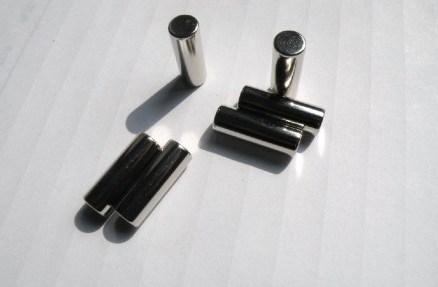
The U.S. Department of Energy, in its Dec. 2011 report entitled Critical Materials Strategy examined the role that Rare Earth Elements (REEs) and other key materials play in clean energy technologies such as wind turbines, electric vehicles, solar cells and energy-efficient lighting. Five of the REEs – dysprosium, neodymium, terbium, europium and yttrium – are considered to be the most critical of the elements considered in the report.
Its often said that each of these Critical Materials represent a market of less than a few billion dollars in a $50 trillion economy so they don’t matter, they are inconsequential and are not really worth investing in. However, let’s look at why they matter and give an example using Rare Earth Elements, and in particular Neodymium.
The current size of the rare earth sector is estimated at US$10-15 billion annually. Global production is about 120,000-130,000 tonnes of rare-earth oxides per year. China provides 97% of the world’s REE production but, according to the USGS Mineral Commodity Summaries 2011, China only has 48% of the world’s known reserves of rare earths. Demand inside China is growing at a faster rate than outside of the country as a consequence China has been imposing export quotas on rare earths which has created two separate rare earth markets – an internal Chinese market and globally, pretty much everyone else. The Chinese export quota for the year sets the global supply and price of REEs.
Demand forecasts indicate steady growth. In the next five years Chinese demand for REEs is expected to grow between 7-12%. In the magnet industry demand for neodymium is expected to grow by about 10% per year. The shift away from electromagnetic systems towards permanent magnetic-based direct drive systems is increasing demand for these high powered magnets. The continuing miniaturization of electronic devices – such as disk drives and micro motors – is possible because of the ability of rare earth magnets to combine high magnetic strength with a small size and weight.
Rare earth oxides are the beginning building blocks used to produce magnetic powders, these powders are the primary material used in the manufacture of rare earth permanent magnets – processing specific combinations of elements results in distinct magnetic and physical characteristics. The main REE oxides consumed in the manufacture of Neo and samarium-cobalt permanent magnets are; neodymium, samarium, some dysprosium and praseodymium.
It is not the size of an individual REEs market, or even the whole critical materials market one should consider. Rather, it’s the manufacture of value added products enabled by these materials that counts.

Coal in Asia is unlikely to recover in 2012 from its first decline in three years as electricity-price controls in 2011 prompted Chinese and Indian utilities, Asia’s biggest energy users, to limit purchases of the fuel. According to the median estimate of six analysts and traders surveyed by Bloomberg late last year, thermal coal at the Australian port of Newcastle, a benchmark price for Asia, is expected to average about $118 a metric ton, in 2012. Prices averaged roughly $122 in 2011. Coal at Richards Bay in South Africa, which supplies Asia and Europe, is also expected to trade lower with analyst estimates at about $111 a ton in 2012, down from $118 in 2011, the survey showed.
According to China Coal Transport and Distribution, China may slow imports of the fuel this year after increasing shipments by about 10 percent in 2011. Rahul Bhandare, chairman of coal trader Knowledge Infrastructure Systems, thinks Indian purchases may also fall in 2012.
Demand issues are not limited to Asia, last week TECO Energy (profile NYSE:TE) lowered its coal sales forecasts for 2012 in the face of weaker demand and declining coal prices. TECO Coal owns and operates low-sulfur coal mines and handling facilities in Kentucky and Virginia. The company mines and ships almost 9 million tons of coal annually. TECO Coal’s primary customers include the United States and European steel industries, as well as domestic utilities and industrial customers.
The company cited a mild winter, low natural gas prices and slow economic growth as factors that have reduced demand for coal over the past four months. “At this time, rather than sell coal at current prices or build inventory, TECO Coal is scaling back production immediately and lowering its 2012 sales projections,” CEO John Ramil said in a statement.
In the face of reduced sales targets and the threat of class action lawsuits, U.S. coal companies Alpha Natural Resources and Walter Energy are well off 2011 highs as we start the new year. Alpha Natural Resources (profile NYSE:ANR) is currently trading at $20.19 down from last year’s high of $61.66 while shares of Walter Energy (profile NYSE:WLT) are currently being exchanged for $70.93 up $1.80 on the day but well off 2011 highs of $143.76. Despite negative market sentiments, brokerage Sterne, Agee & Leach recently upgrading Walter Energy from “underperform” to “neutral” contending contract pricing for its met-coal products may be close to bottoming.
Earlier this week, interlisted Australian coal developer Coalspur Mines (profile ASX:CPL – TSX:CPT) completed a bankable feasibility study for its flagship Vista project in Alberta, Canada. The export thermal coal mine is expected to be one of the largest in North America and the study reported a 30-year mine-life with estimated annual production of 11.2 million tons of coal each year. The cost of building the new mine is estimated at C$1.2 billion.
Coalspur CEO, Gene Wusaty, stated, “The positive results of the study confirm Vista’s potential as a first-class export thermal coal project. The study includes a very detailed evaluation of Vista’s productive potential and a comprehensive assessment of the capital costs required to develop the mine.” Notwithstanding analyst forecasts for 2012, Mr. Wusaty cited growing demand for thermal coal in the Asia Pacific economies supported the underlying fundamentals required to proceed with the development of the Vista project.
If you would like to receive our free newsletter via email, simply enter your email address below & click subscribe.
CONNECT WITH US
Tweets
Tweet with hash tag #miningfeeds or @miningfeeds and your tweets will be displayed across this site.
MOST ACTIVE MINING STOCKS
Daily Gainers
 Lincoln Minerals Limited Lincoln Minerals Limited |
LML.AX | +125.00% |
      |
GCR.AX | +33.33% |
      |
CASA.V | +30.00% |
      |
AHN.AX | +22.22% |
      |
ADD.AX | +22.22% |
      |
AZM.V | +21.98% |
      |
NSE.V | +21.05% |
      |
DYG.V | +18.42% |
      |
AAZ.V | +18.18% |
      |
GLA.AX | +17.65% |


 Follow us on Twitter
Follow us on Twitter Become our facebook fan
Become our facebook fan








